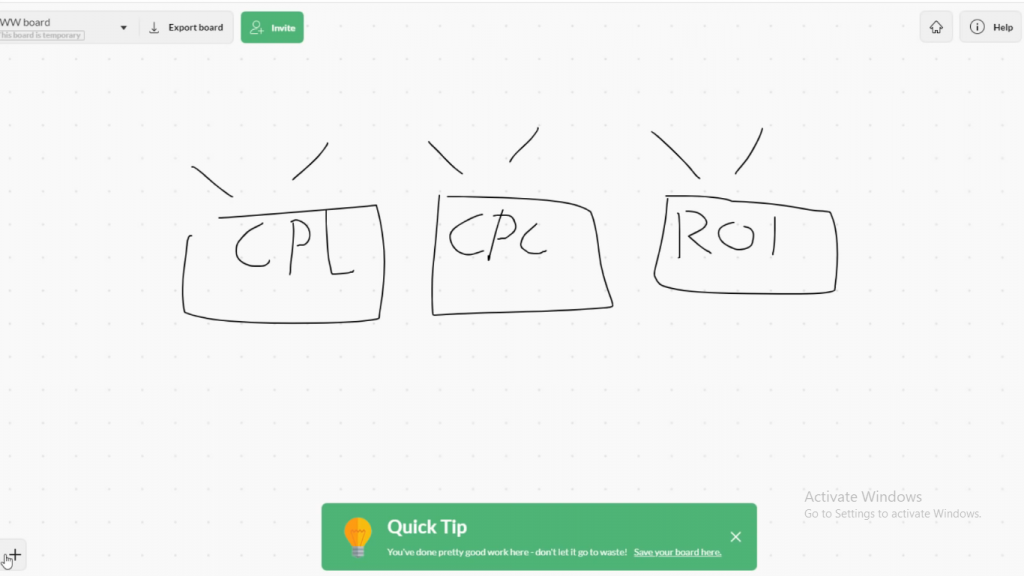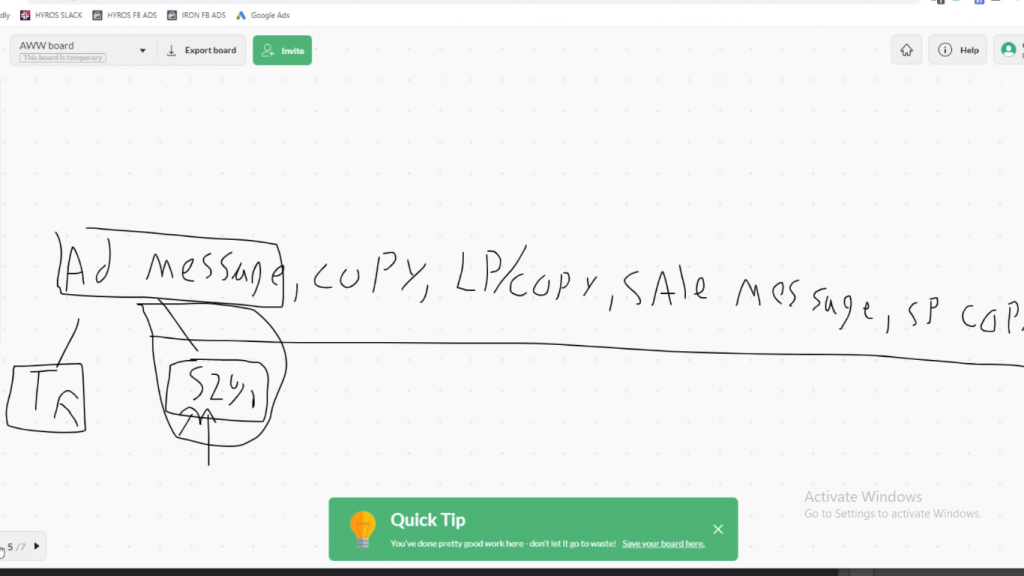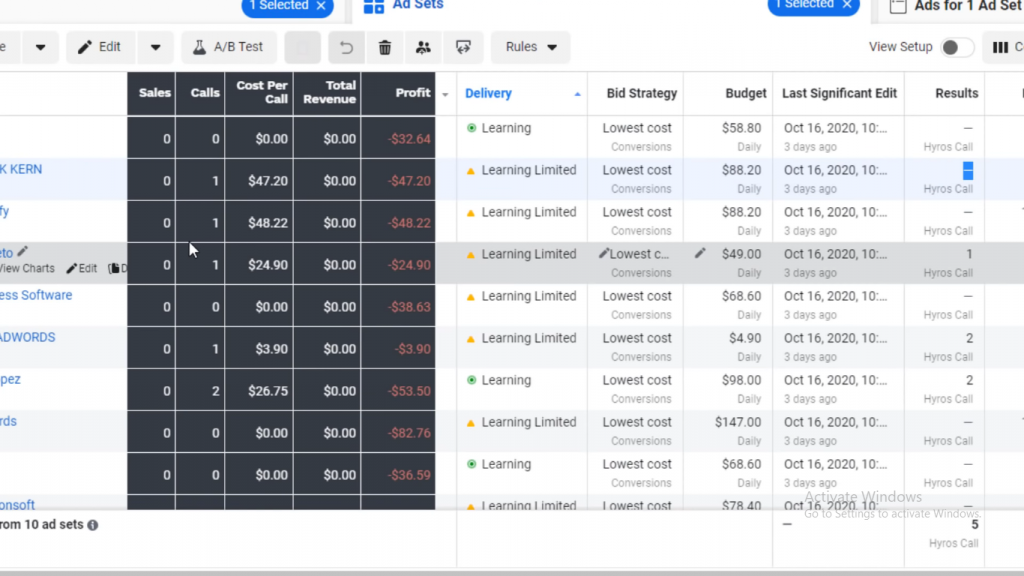
2021 Advanced FB Bidding and Cost Cutting Guide
Hello, ladies, gentlemen, and a few of you and goblins, you know who you are. This is the final blog post in this series about how to increase your ads while cutting costs. So if you’ve missed parts 1, 2, or 3, you can check these out as this guide builds and finishes on that content.
What I’m going to break down in this guide is to walk you through how to scale your Facebook ad spend without breaking the bank.
I’ll break down what you need to know about how to scale, what you want to achieve, and how to do it all without blowing up your ad spend.
You’ll learn how to do:
- $50 a day scale
- $200 a day scale
- $500+ a day scale
- $1000 a dale scale
- $5000 a day scale
And best of all, you’ll learn to scale consistently without blowing up your ads.

Typically, when people scale their CPL, their CPA, or the cost to acquire a customer goes through the roof, something about their ads blows up. And people often don’t know what it is, but when ads scale, usually something goes wrong because the ad is not competent enough to scale up to that next level.
If you know how to look at this, you can prevent it from happening in the first place. Or you can address the issue before you scale, which most people try to do when they reach a certain point.
The Truth About Your Ad Scaling
What happens is that people get their ads to a certain point and keep hitting it and hitting it again, thinking that some audience or bidding strategy holds them back.
This is not how this works.
At a certain level of scale, there are types of things going to go wrong with your ads. However, these can be very common things you can fix that will help you achieve scaling to the next level.
What Do You Mean By Scaling?

Scaling is defined as growing, expanding, and increasing work, output, and sales without adding costs associated with that growth.
In essence, scaling is just keeping your ads profitable while going more broadly in your audience reach, which is typically more costly to target.
Literally, that’s all we’re talking about here—increasing your reach without adding costs to your ad buys.
And if you know how to make your ads reach a broader audience without increasing your ad costs, you’ll make your ads more profitable and better optimized.
The best way for you to scale is by optimizing your funnel, the offer, and your ad copy, not stressing about the scaling of little weird bidding things.
I created this guide to show you where to look at each level for potential problems in your scaling strategy.
So let’s get to it.
Strategies To Help You Scale
This guide is designed to help you understand all about scaling at each level and getting the outcome and returns you’re hoping to achieve.
Don’t Overspend
The goal is not to spend the most on your ads but rather to learn to spend efficiently. I’ve seen better results at $2-3k daily versus paying $15-20k daily.
When devising your strategy, think about your intended goal first. That’s right, plan for what your profit target first.
Don’t try and trick the Facebook algorithm into thinking you are somebody famous and powerful with small increases of, say, $0.02 per day.
There are a few things you need to understand first about scaling.
The first thing to consider is when you’re scaling from $100 to $500 per day. After that, the higher ad spend shows that the audience begins to behave very similarly.
Say we have an audience at $1000 per day, and you see that targeted audiences begin to act the same, then you know when you scale, when your numbers fall apart, it’s not the audience behavior that’s the problem.
In fact, it isn’t your targeting that’s a problem at all. As you scale to the higher levels, you get look-alike audiences to target. So if you’re targeting a lookalike audience at 3% conversion, you’ll need to reach 3-5 million people at about $10,000 per day.
Usually, when ad buys are so large, and ROI begins to slip and go down, advertisers attribute it to ad fatigue. The typical way advertisers address this issue is to create more ads. But, unfortunately, while changing your messaging and ads may help a little, it will not achieve the ROI you want.
Instead, the long-term answer should be ads that can work for a very long time. In general, it may take up to 100 ads in your ad account before you get to the point where 5% of your ads are converting well–these ads are gold and hit it out of the park every time.
These ads that perform well are rare. It’s about 1 in 20 that perform consistently. If you look at my ads account, you will find about 60 total ads; about 4-6 that perform well. There’s no rhyme or reason why this ad outperforms another ad.
Out Of The Kiddie Pool Into The Deep End
The thing about scaling your ad campaigns is that the more you spend, the more competitive it becomes. When you’re spending $100 per day, you’re swimming in the kiddie pool, as I’ve said before. Once you start paying $500 and $1000 per day, you’re now in a much broader pool and even a super-broad pool.
At the lower end of the scale, advertisers typically have a very targeted offer that won’t survive in the much deeper pools of higher ad buys. And what happens is that as people spend more, messaging and offers are all different from before, and advertisers can’t scale past $5000 a day because it just doesn’t work.
The ads don’t work at this level because the message of the offer doesn’t work for the larger, broader audience. So the best way to scale is to tweak and change the messaging from a highly targeted one to a broad, general audience message.
A Personal Example
Okay, let’s look at an example. In this ad, I’m constantly getting $100 calls which are phenomenal at Hyros because I’m massively profitable at $400.

If I go and look at the same audiences, we see that even at $73 cost per call, we’re doing well. I understand this is a call funnel, but I realized it translates to e-Commerce, mass information, and core sales funnels. So it’s the same thing across the entire board.
This entire guide is designed as a way for me to spill little pearls of wisdom throughout that will simply help you scale and get a much higher ROI on your ad spend. In addition, this guide is packed with some of the tips and tricks I use on a daily basis.
Okay, let’s dive a little deeper into my ads.
This lookalike audience hires calls mid-year. So if I go and look at the same audience, this campaign is ready to go. So let’s plug it in at a higher row scale, and you can see it’s now $300 cost per call.
On the following line, you can see that Hyros 3% is netting $500, whereas, on the next one, you can see I’m getting $79 cost per call. So, again, it’s all about the messaging of the ad. I’m averaging $100 cost per call on one ad and $500 cost per call on another because I focused on tweaking the message, how the funnel works, how the person interacts with the ad, and how the person received the call.
As you can see, if the same audience is used, I’m getting significantly higher numbers, and at $400 a day, I can scale, but I’d like to see 10x ROI on my ads. I’m incredibly greedy with Hyros. After all, it’s such a great offer.
Remember, it’s not an audience thing; it’s a message thing.
Scale Your Ads Based On Results
The most important thing I need to tell you very quickly is that for the love of all things good and gravy, I’ve talked about this six times in past guides already, so I’m not going to talk about it too long here. But, you need to track your ads. So, even if you don’t want to use Hyros and get weekly tracking or segments, I don’t care.
Do not use ad platform tracking to make your decisions.
Look, this is the world’s simplest funnel. A person just clicks in and books a call. I’m looking at two calls right here right now.
In this one example, it looked like it was a dud audience and didn’t catch any calls. This other one caught two calls and looked like a dud audience. It would cost $300 per call if I didn’t track this correctly. This one reported three calls because of view through conversions and how it follows things, or maybe a person clicked an ad on Google.
If that’s the case, then Google would get the credit for it.
Because, again, I Have multiple traffic sources running, and you might as well since this is an advanced course. So you’ll have organic traffic running, and you’ll have Google ads running, and you’ll have Facebook ads running as well.
Facebook may be taking credit for the ads on its platform, or it might give itself view-through conversions.
And if you’re scaling based on that, you’re scaling on incorrect data. And this shouldn’t come as a shock to anybody.
Here’s the thing, when you scale on incorrect data, you spend money on ads that don’t make you money. You kill ads making you money, and when you do both those things consistently, you’re going to waste lots of money and kill your scale prematurely.
When you track your ads correctly, you’ll make better decisions and get a higher ROI on your ads.
Again, I have my Hyros data with my high-risk tracking data, as you can see.
Here’s an ad set doing quite well; reported no conversions. Here’s another ad doing quite well, and no reported conversions. And another, doing quite well, $84 calls, holy moly, not reporting it.
If I turn off these ads, I’m turning off my best source of calls.
Finally, last, of all, scale around ROI. It takes a little time for my calls and sales to come in, but I can already see my ROI.
In these platforms, If you’re doing a call funnel or a webinar funnel, you’re doing a long click to sales time, and you’re not scaling on ROI, you’re bonkers, ok?
If you want the same tracking as this, go below and click a consultation with Hyros. Again, I’m not trying to pitch or sell you in this guide; I just don’t know how to give scaling advice if you’re not using the correct data.
Think about it this way; it would be like me giving stock advice with incorrect stock data. I wouldn’t tell you to invest in something if the numbers I was basing my investment advice on were wrong.
Once I have the right data, I will scale like this; I usually start audiences at about 100 bucks a day. If it’s a big audience, such as it has over a million people, I’m gonna kick it at $100 a day.
You can start at $50 to $100, whatever you want to do. Some people start at $20, and that’s way too small to see data quickly. On the other hand, this is an advanced course if you’re starting, so we’re not starting at $5 per day bidding.
If I start at $20 a day, it will take me 20 days to figure out what I could do in 1 day at $100.
Now that concept doesn’t work if I kicked it at $1000 because the audience might get blown out, which means that the ad’s message loses traction.
Okay, so the place the ad will actually perform and be profitable may be at $300 a day, $500 a day, but $1000 a day could hit blowout.
What Is Blowout?
Let’s imagine we have an ad that is working, and we’re getting great CPLs, great CPAs, and whatever acquisition costs are profitable. You’ve probably noticed at a certain point of the scale. It blows out. It stops working, and all your numbers go to hell.
What you want to do is find the blowout area and then work on messaging to increase the blowout area. That’s all scaling is, finding the blowout area and improving it.
Now, you’ll want to increase by double each day if you’re at sub $200 or $250 per day.
So, for example, if I’m at $50 a day, I will scale based on e-commerce profitability ROI because I will see my ROI right away.
If I’m doing a webinar or call funnel, I’m going to scale based on my CPL. I’m not going to optimize around my CPL with my ads. I’m just going to use CPLs as a rough number. If I see a decent number, I will use that.
If I’m doing a call funnel, I’m eventually going to look for the cost per call, and we can usually get that number quickly.
Okay, take a look, and you’ll see I’m not scaling up too much at around $2000 bucks a day. With these ads, I see my costs per call coming in just fine. So we can usually detect fee per call pretty early with a webinar funnel.
Sometimes you’ll only get a sale or two on a $2000 product. Eventually, you’ll want to scale ROI with the webinar funnel, which will be your end decision-maker. I usually like to go off the opt-in without optimizing the opt-in.
The Power Of Opt-Ins
Okay, because opt-ins are like if you had a video game store, the opt-in would be people coming in to play free demos all day but aren’t going to buy anything. We want to optimize by people that actually buy the games.
And if we go and see our CPLis good for them, then we want to go around that. Usually, you’re going to do better not optimizing for anything, but that’s been discussed before, so go check that out.
We’re going to double up every time we see good results, so if I’m at $50, then go to $100, at $100 to $200, and so on.
After I get to around $450-500, that’s where I’m going to slow down my increase to 25% every single day. This idea depends, though. It’s not an absolute thing.
Sometimes if the numbers look fantastic, I’ll bump it up more, from $500 to $800. It just depends. If there’s zero resistance to scale, what you’re going to see as your CPA or whatever key metric you choose is that as you climb, you’re going to know where the blowout will start. That’s because you’re increasing from $100 to $200 daily.
And then you go from a $5 CPL to a $7 CPL, sometimes you go to $100 to $250 a day, you see your $5 CPL go to $4 CPL because as it gets a bit more optimized and you think, okay this is good. So you go from $200 to $400, and your CPL stays at $4-5. Okay, it’s still good.
Then, when you go from $400 to $800, you get a big audience, your message is working really well at that point, and that’s what we’re looking for. But, we’re looking for the blowout point where it goes from stable to blowing up.
The same things happen on AdWords and Facebook–check out the AdWords YouTube scaling course if you want to check that out.
Other Scaling Options
Finally, I want to talk about the things that allow you to scale much future besides increasing your bids.
The first thing you want to do when starting this up is to get a lookalike audience of buyers. This is hard for webinars and call funnels since it has a long-click time for a sale.
But if you have a lower ticket item like E-Commerce, you want to get to 100 sales as fast as possible.
What you want to do is go and create a lookalike audience based on all sorts of actions, your opt-ins, your abandoned carts, and your calls. So usually, those are what I’m going to operate around.
You don’t want lookalike audiences based on visits because that’s just wonky. A visitor isn’t technically anything. So you can do it sometimes, but test the audience.
If you’re doing a webinar, make your lookalike audience base run opt-ins but don’t optimize those opt-ins.
If you’re doing the call funnel, run your lookalike audience to opt-ins and then your calls. Then it’s going to take some time for a webinar and call funnels, but you want to take your customers. So once you have 100, make your lookalike around that. It’s going to help you.
When it comes to scaling webinars and call funnels, almost always, it’s better you don’t optimize anything with webinars.
Why? Because what’s going to happen if you optimize for opt-ins, you are optimizing the freebie seekers, not buyers, for your sales funnel.
For call funnels, I optimize for the call, not the opt-ins. In fact, if you optimize the opt-in, you get worse results than if you didn’t optimize or target period. You can test me, but I won’t be wrong in most cases.
Next, if you want to scale further, you want to determine your best metrics. For example, if you are running an E-Commerce funnel and have a deep funnel with lots of offers, it’s entirely okay to scale while breaking even or losing money.
For example, I built a $1 million per month business while losing 20% upfront in ads. However, we would make it back 4x in 3-4 months as payment plans and additional sales came in.
You have to look at everything in context.
The way you’re going to scale the furthest with your ads is once you get to about $1000 a day on an audience, you’re competing against people that focus on the long term with their ads. They’re willing to lose money upfront to make money in 3-4 months or more.
The most profitable businesses, they 10x their ROI on their ads but don’t make much upfront.
Take ClickFunnels as an example. One thing Russell Brunson did is he didn’t make much on the ads. He’d break even getting people buying and getting buyers into the business. He’d get them onto ClickFunnels, where they get recurring subscriptions, buyer’s mastermind, and other things.
Building a funnel, it’s completely ok to lose money upfront. But, then, as you get your numbers super-optimized and messaging improved, If I’m getting to a break-even point in my funnel, that’s fine.
Because I’m getting tons of interest and building massive retargeting for Hyros, if I lose money upfront on high-risk customers and get them at $100 a month, but it costs $200, that’s okay because I’ll still be profitable by $800 at the end.
Whether E-Commerce, webinars, or call funnels, it’s okay to break even while gaining tons of people into your business and getting them indoctrinated. It’s how you make money long term that’s the biggest key to your scaling.
Look at your long-term business numbers and then play off those numbers. It’s easy to run ads 10x over a year. It’s so much more difficult to run ads 3-4x at scale constantly. Say you spend $10 to make $40–or $10,000 to make $40,000.
This is hard to try and do, which will hamstring you because some people are ok spending $10,000 to make $10,000. But those people are looking at the long-term funnel of spending $10k to make $100,000.
Usually, what’s more, profitable is not to go Hambone on the second person that comes into your business but to get that person indoctrinated in the right way.
Looking to optimize your ad spend, take the long-term ROI, and scale appropriately as you test.
Guys, this is the end of the guide on my Facebook series. If you want a free consultation and me to hop over your shoulder and work with you on your ads, check out the link below. Of course, you can try to optimize it all on your own, but nothing is as effective as Hyros.
Schedule a quick demo, and we’ll show you how to improve your ads and have a 90-day guarantee on top of it.
There’s no risk in checking us out.
